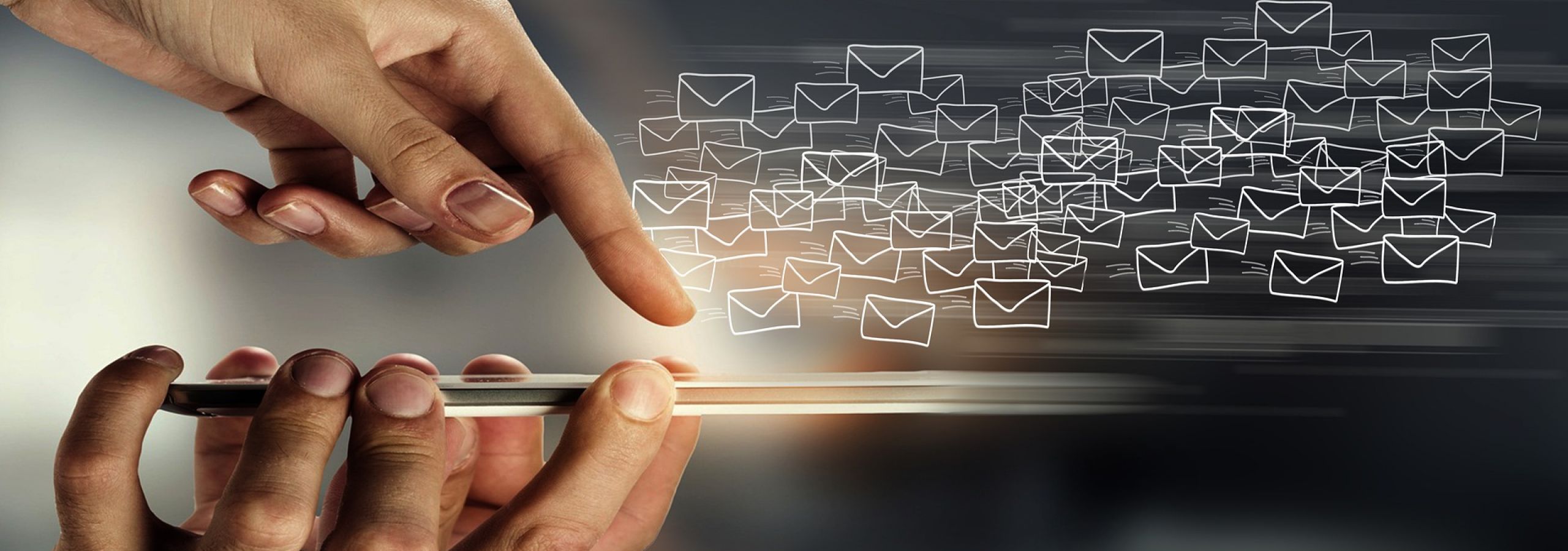
Understanding Phishing Emails | Protecting Personal Data
Due to a rising number of security breach incidents and data breaches that impact millions of Americans, the U.S. government and consumer safety organizations are urging individuals and companies to educate themselves on the basics of personal and work network security. Understanding how phishing emails and cyberattacks work is a good start.
In recent years, ransomware and phishing attacks have been the weapons of choice for cybercriminals, and in successful data breach incidents, hackers can harvest a load of valuable personal information.
Why Do Hackers Use Phishing Emails?
Phishing emails remain one of the most widespread and damaging cyberthreats today, targeting individuals, businesses, and entire industries. These fraudulent messages are designed to trick recipients into disclosing sensitive personal information, downloading malware, or granting unauthorized access to private accounts. While phishing schemes have been around for decades, their sophistication has grown dramatically, increasing the privacy risks for victims who may suffer data breaches, identity theft, or financial losses.
Understanding the privacy risks of phishing emails is critical—not just for prevention, but also for knowing your rights if your data is compromised due to negligence by a company or institution entrusted with protecting it.
Phishing attacks, in particular, are successful in many instances because they are disguised as emails or other communications from supposedly trustworthy sources. Some common phishing email scams may include:
- Account Deactivation: common phishing emails alert an individual that their account will be deactivated unless they take action and send certain personal information or credit card numbers
- Compromised Credit Card: a similar phishing email alerts a consumer that their card has been used fraudulently and asks an individual to confirm their credit card details to protect their account
- Transfer of Funds: emails are masked as from an employer (sometimes a superior) and may ask an individual to urgently send a wire to a vendor
- Social Media Request: in other scams, a friend of a friend requests to follow, and begins to send media packed with malware that may seep into the company’s network
Joe Lyon is a data privacy attorney investigating data breach incidents and is actively filing class action data breach lawsuits on behalf of plaintiffs nationwide. If a company fails to properly protect your personal information, and data is stolen, you may have an invasion of privacy claim.
How Phishing Emails Work
Phishing typically involves emails that appear to come from a legitimate source, such as a bank, healthcare provider, employer, or government agency. Attackers may use familiar logos, convincing text, and urgent language to create a sense of legitimacy and pressure. Common tactics include:
-
Asking recipients to “verify” login credentials.
-
Embedding links that lead to malicious websites.
-
Disguising harmful attachments as invoices or forms.
-
Spoofing addresses so the email looks authentic.
Even the most cautious consumer can fall victim, particularly as phishing emails increasingly use AI-driven personalization and social engineering techniques. Cybercriminals can use a creative mix of personal data to create a profile bold enough to create opportunities for fraud and identity theft. In phishing emails, hackers typically ask for the following:
- Date of birth
- Social security numbers
- Phone numbers
- Credit card numbers
- Home address
- Passwords

What are some Examples Phishing Attacks?
Some examples of requested actions via email may include:
- Clicking on an attachment
- Downloading media
- Updating passwords
- Adding a new friend in a social media request
- Using an unknown wifi hot spot
How do I Deal With Phishing Emails?
Data breach experts encourage workers and individuals to stay alert and be aware of the following phishing schemes:
- Clicking on links and attachments in any email can be hazardous, and workers should hesitate and make sure the email is legit. Phishing scams nowadays can be very convincing, so we are all tested more often than we would like.
- Any extremely urgent message, that requires urgent action should be a potential caution sign. Many phishing email scams warn of dire consequences should you not take immediate action. Again, make sure the message is legitimate before sending any critical personal information to some unknown email or number.
- Don’t re-use passwords on multiple web sites. If you feel like that is in your best interest, consider password managers like Dashlane, Keepass, LastPass and Roboform.
- Beware of phishing phone calls as well. Some scammers may ask for personal and financial information using some of your personal info to sound like they are legitimate. If you have doubts, you can call back at a later time.
Privacy Risks of Phishing Emails
The consequences of clicking on a phishing email can be severe. The biggest risks include:
-
Data Theft: Login credentials, financial records, Social Security numbers, and health records can be stolen.
-
Identity Theft: Once hackers obtain personal data, they may open accounts, take out loans, or commit fraud in the victim’s name.
-
Financial Loss: Unauthorized charges and drained accounts are common outcomes.
-
Corporate Breaches: If an employee falls for a phishing attack, entire company databases may be exposed, impacting thousands of individuals.
Phishing attacks don’t just harm individuals—they often represent systemic failures in data security. When organizations fail to implement strong cybersecurity measures, they may share liability for the damage caused.
Legal Implications of Phishing Attacks
If you believe your data was exposed through a phishing email, especially one linked to a corporate or institutional breach, you may have grounds for legal action. A data privacy attorney at The Lyon Firm can evaluate your case, determine whether a company failed to uphold its duty to protect your information, and pursue compensation for damages such as financial losses, credit monitoring costs, and emotional distress.
Phishing emails are more than a nuisance—they are a major threat to privacy, financial security, and digital trust. With attackers becoming more sophisticated, individuals must remain cautious, and organizations must be held accountable when they fail to safeguard personal data. If you have been affected by a phishing-related data breach, consulting with an experienced lawyer can help you understand your rights and seek the justice you deserve.
Victims of phishing schemes may have legal recourse if their privacy was compromised due to negligence by a company, employer, or service provider. For example, if a business stores customer data but fails to implement proper safeguards, and attackers exploit phishing emails to access that information, victims may pursue claims for:
-
Negligence in data protection
-
Failure to notify victims of a breach in a timely manner
-
Violations of state and federal privacy laws
Class action lawsuits are becoming increasingly common after large-scale phishing-related data breaches. Courts are recognizing that consumers have a right to compensation when businesses fail to protect sensitive information.
To learn more about recent security breach incidents and to join current class action privacy lawsuits, contact The Lyon Firm. Call for a free and confidential consultation.
cyberattacks, Data Privacy Lawyer, email scams, phishing attacks, phishing lawsuits